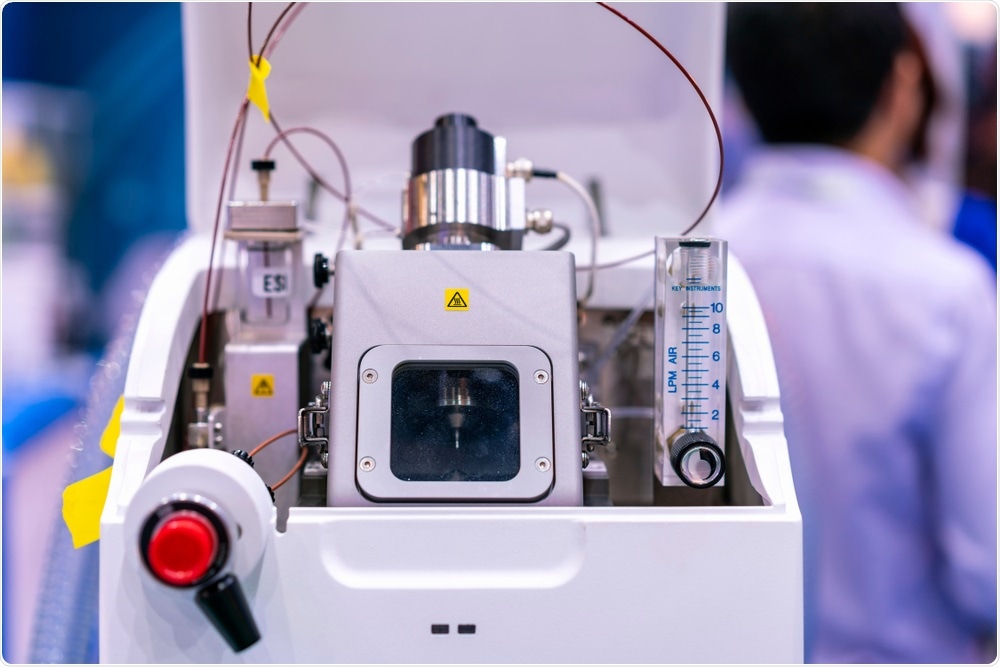For over four decades, researchers have proposed the presence of enzyme clusters, also called metabolons, which help facilitate several processes within cells.
As a first, researchers from Penn State have combined a novel imaging technique with mass spectrometry and have directly observed the functional metabolons involved in the process of purine generation—the most abundant cellular metabolites.

Image Credit: Surasak_Photo/Shutterstock.com
The study outcomes could potentially result in the development of new therapeutic strategies that disrupt cancer progression.
Our study suggests that enzymes are not haphazardly located throughout cells, but instead occur in discrete clusters, or metabolons, that carry out specific metabolic pathways. Not only did we find proof that metabolons exist, but we also found that this metabolon occurs near mitochondria in cancer cells.”
Stephen Benkovic, Evan Pugh University Professor and Eberly Chair in Chemistry, Penn State University
The study results were published in the Science journal on April 17th, 2020.
As part of the study, the researchers looked for a particular type of metabolon named “purinosome,” which was perceived to perform “de novo purine biosynthesis.”
This is the process by which new purines—the building blocks of DNA and RNA—are produced. The team examined these purinosomes inside the HeLa cells, a cervical cancer cell line often used in scientific research.
We have shown that the de novo purine biosynthetic [DNPB] pathway is carried out by purinosomes consisting of at least nine enzymes acting together synergistically to increase their overall activity by at least by seven-fold.”
Vidhi Pareek, Assistant Research Professor, Department of Chemistry, Huck Institutes of Life Sciences
The scientists used a novel imaging technique created by Nicholas Winograd—Evan Pugh University Professor of Chemistry—and his colleagues to identify the purinosomes with a diameter of less than a micrometer.
The technique utilizes gas cluster ion beam secondary ion mass spectrometry [GCIB-SIMS] to detect intact biomolecules with high sensitivity and allow in situ chemical imaging in single cells. This was vital for the study since we are dealing with very low concentration of molecules in individual cancer cells.”
Hua Tian, Assistant Research Professor, Department of Chemistry and Materials Research Institute, Penn State University
Nicholas Winograd has made efforts for 35 years to develop novel techniques, which include high-resolution GCIB-SIMS that provides sub-cellular chemical information.
Winograd stated, “Now, at the end of my career, I am finally seeing this imaging approach reveal the presence of purinosomes, and perhaps next, observe that a cancer drug actually makes it into a purinosome where it can be most effective.”
Notably, the researchers have discovered that the DNPB pathway occurs in a channeled way while the proximity of purinosomes to the mitochondria helps in the uptake of substrates produced by the mitochondria for utilization in the pathway.
Channeling emerges when enzymes are situated in closer vicinity of each other so that the synthesized molecules can be transferred soon and processed along the enzymatic pathway, limiting equilibration with the bulk cytosol.
According to Benkovic, “Our experiment allowed us to show that the efficiency of the de novo purine biosynthetic pathway is increased by channeling and that the proximity of purinosomes near mitochondria is consequential for the pathway. These findings open the door to the study of a new class of cancer therapeutics; for example the design of a molecule that can disrupt purinosomes’ juxtaposition with mitochondria.”